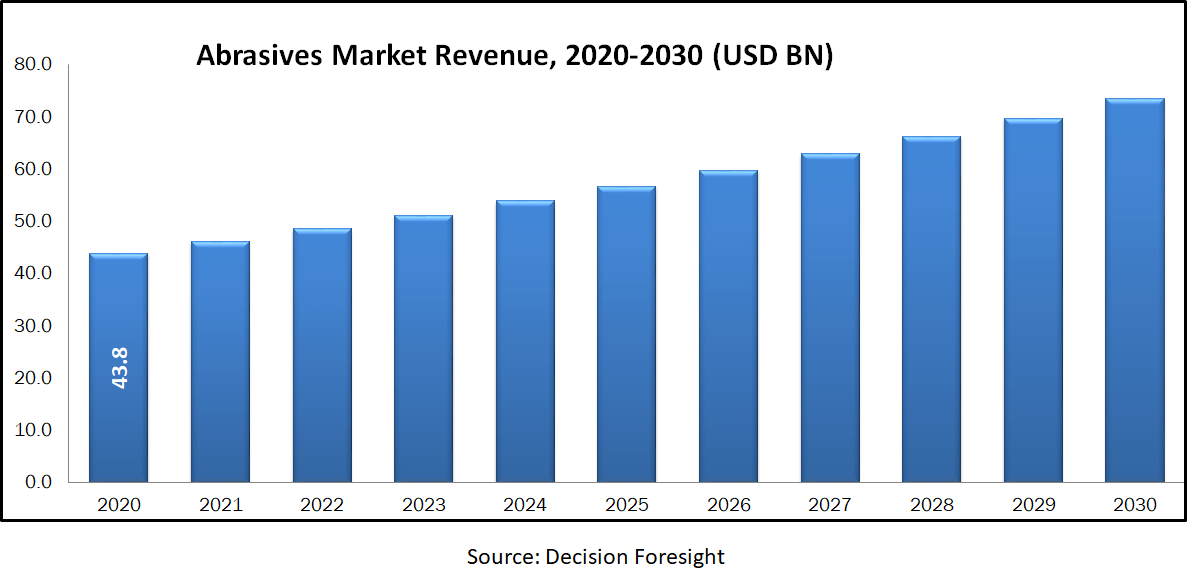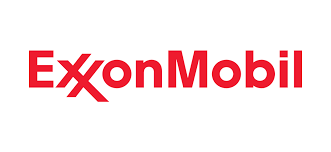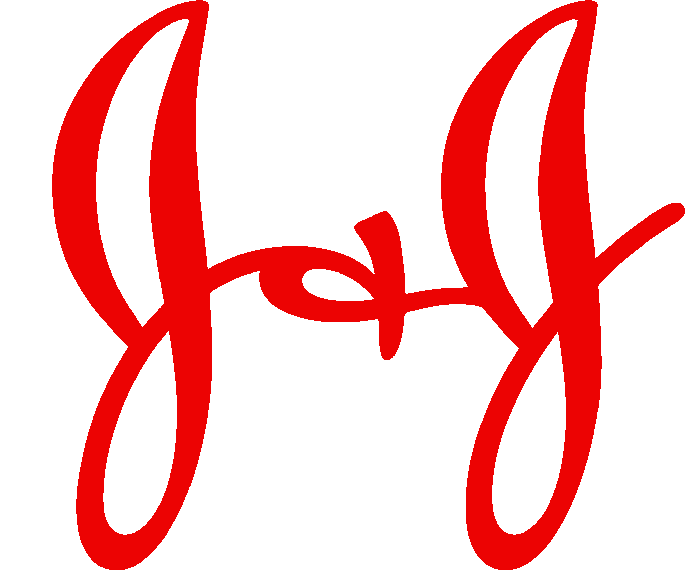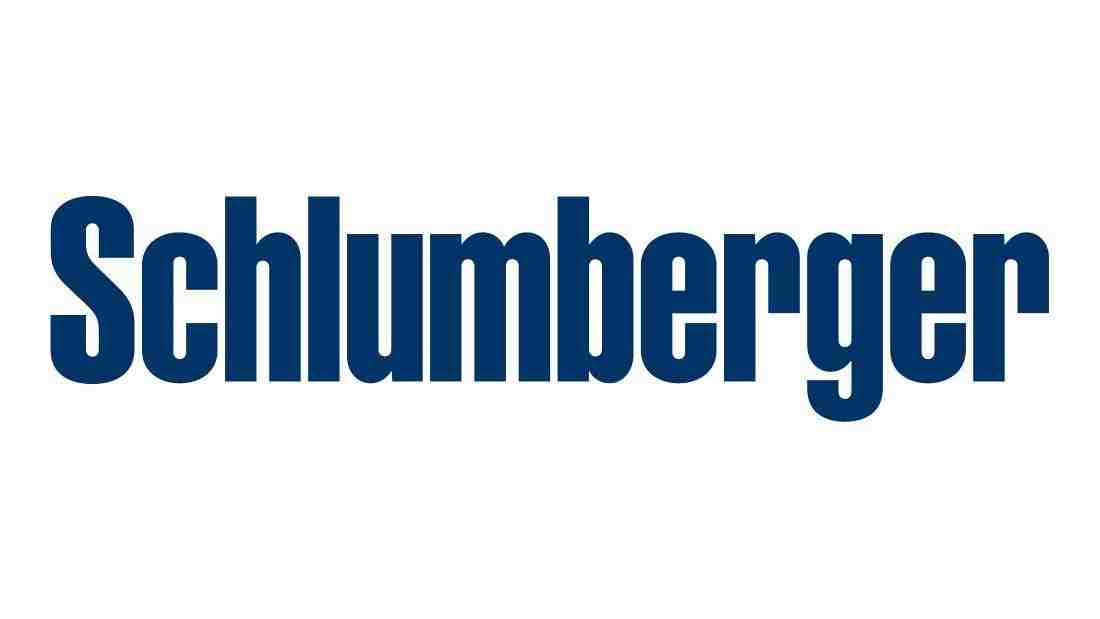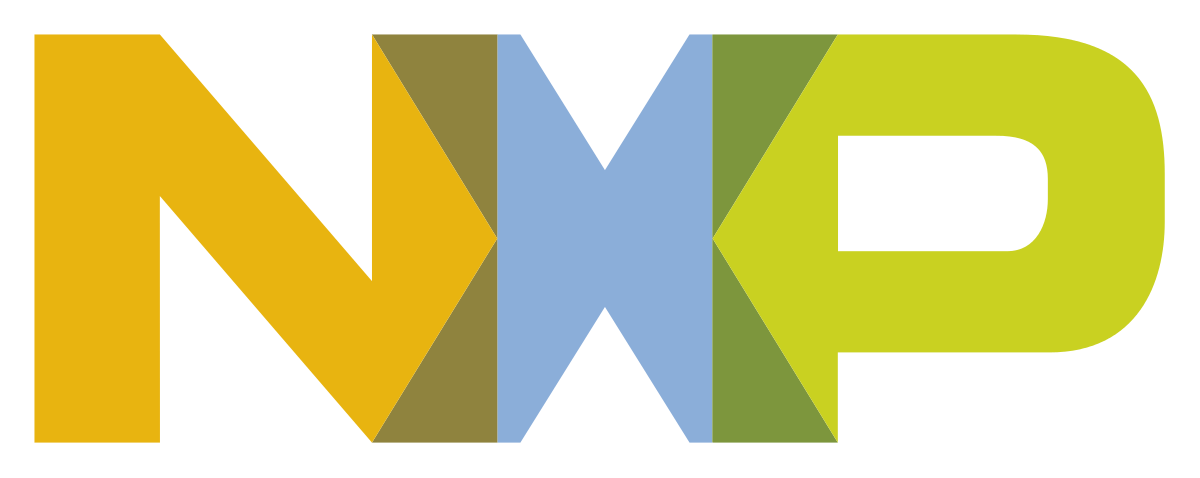Abrasives Market valued 43.8 USD billion in 2020 and is expected to reach 73.45 USD billion by 2030, at a CAGR of 5.3% during the forecast period.Abrasives are hard materials, used for cleaning the hard surface, grinding, and polishing across the various industries. It helps to provide shape and surface finish for the material. It acts as a mineral-like material and available in different sizes and shapes depending upon the need. It is used for cleaning, abrading, scouring, grinding and removing solid materials by the action of rubbing. Further, two kinds of abrasives are available in the global abrasives market as synthetic and natural. Natural abrasives include corundum, garnet, emery, and pumice and synthetic abrasives include silicon carbide and alumina. Additionally, the grinding wheel, the most important abrasive product, is involved in the manufacturing of machinery, electronic components, electrical, and automotive components. It is made of abrasive grain and is a self-sharpening cutting tool. The majority of grinding wheels made have a ceramic bond, vitreous, and are made of feldspars and clays.
Market Segmentation:
On the basis of type, the global abrasives market is divided into bonded, coated, and super. Based on material, the market is divided into synthetic and natural. On the basis of the end-user industry, the market is segmented into metal fabrication, automotive, machinery, construction, electronics,and others. On the basis of application, the market is divided into grinding, cutting, polishing, and drilling. Geographic breakdown and analysis of each of the aforesaid segments includes regions comprising North America, Europe, Asia-Pacific, and RoW.
Market Dynamics and Factors:
The growing demand of the automotive industry is the key driving factor for the rising abrasive demand. Abrasives play a vital role in manufacturing automotive components in modifying operating parameters such as reducing the carbon dioxide emissions of high-performance engines, lowering the noise levels and machining of components. The efficient finishing of automobiles requires abrasives for sizing engine parts, cleaning, deburring, repairing and maintaining the body, interiors, and accessories of the automobile. According to the research study, global cars and commercial vehicle production grew by approximately 9.23% in 2018 from 2013. Hence, this augmented demand for automobiles is expected to indirectly influence the abrasive market growth positively. However, stringent regulation for the usage of silica abrasive and limited availability of raw materials is expected to restrain the growth of the market. Investments in R&D activities to produce innovative and less hazardous abrasives are expected to provide ample opportunities for the market to grow in the near future.
Geographic Analysis:
Asia-Pacific is dominating the market across the world. In 2016 Asia-Pacific region accounted for an approximate 40% share of the total revenue. The growth in this region attributed to the growing demand for bonded and coated abrasives suitable for precision grinding processes. Followed by Asia-Pacific, Europe is the second-largest contributor across the world. Ongoing construction projects in Russia, Poland, and Western European countries, which is expected to offer growth opportunities to synthetic abrasives segment. Europe accounted for 19.4% share of total revenue in 2018. North-America is anticipated to show significant growth in the near future. Due to the increasing demand for commercial vehicles.
Competitive Scenario:
At a global level, the key players of the abrasives market are Bosch (Germany), DowDuPont (US), Saint-Gobain Abrasives (France), 3M (US), and Fujimi Incorporated (Japan), Henkel (Germany), Tyrolit (Austria), LTD (Japan), Deerfos (Korea), Asahi Diamond Industrial Co., and Carborundum Universal Limited (India). Large construction players such as Balfour Beatty PLC (UK), Lafarge Holcim (France), and Kier Group (UK) have a scope to enter into abrasive services.
Abrasives Market Report Scope
| Report Attribute | Details |
| Analysis Period | 2020–2030 |
| Base Year | 2021 |
| Forecast Period | 2022–2030 |
| Market Size Estimation | Billion (USD) |
| Growth Rate (CAGR%) | 5.3% |
|
| By Type (Bonded, Coated, and Super), By Material (Natural and Synthetic), By End User Industry (Automotive, Metal Fabrication, Machinery, Electronics, Construction, and Others), Application (Grinding, Cutting, Polishing, and Drilling) |
| Geographical Segmentation | North America (U.S., Canada, Mexico) Europe (UK, Germany, Italy, France, Rest of Europe), Asia-Pacific (China, Japan, India, Australia, Rest of APAC), South America (Brazil, Argentina, Rest of SA), MEA (UAE, Saudi Arabia, South Africa) |
| Key Companies Profiled | Bosch (Germany), DowDuPont (US), Saint-Gobain Abrasives (France), 3M (US), and Fujimi Incorporated (Japan), Henkel (Germany), Tyrolit (Austria), LTD (Japan), Deerfos (Korea), Asahi Diamond Industrial Co., and Carborundum Universal Limited (India). |
